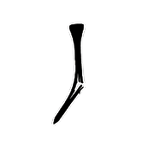Throw Darts with Your Short Irons
2 minSo how do you hit the ball closer to the hole? Improving your swing mechanics can certainly help, but as Titleist staff member Tom Patri advises in this video, there's probably something far easier you can do with the swing you've already got – change how you think about your short irons.
Do you typically take full swings with your 7-, 8-, 9-iron and wedges? If so, you're not using these clubs properly. As Tom explains, your short irons are tools for accuracy, not power. When you start using them more surgically, your shot dispersion will immediately tighten up. You'll start measuring success not in terms of hitting the green, but in terms of hitting the proper quadrants on greens.
Use Tom's keys the next time you have a short iron in your hands and watch your scores improve dramatically:
• As you size up your short iron shot, imagine the green cut up into four equal pie slices (back-left, front-left, back-right and front-right). Determine in which quadrant the pin is located. Your goal is to get your golf ball inside the same quadrant in which the hole is located.
• Determine the distance your ball needs to travel to hit the center of your target quadrant. Take at least one more club than needed for that distance. If your target distance is 110 yards and that's your typical full-swing carry distance with a pitching wedge, pull your 9-iron instead.
• Grip down on the handle of your club, effectively shortening the length of the club.
• Move the ball back in your stance to promote a lower, penetrating flight that will minimize the effect of wind on your ball.
• Rather than a full-swing, make a controlled 3/4 swing. As Tom says, you're throwing darts with these shots, not swinging for the fences.
• Make a smooth, controlled pass through the ball and abbreviate your follow-through to match your 3/4 backswing. Your objective is a low, boring shot with plenty of spin that will hit your target quadrant and stay there, leaving a good opportunity to hole your first putt.

























